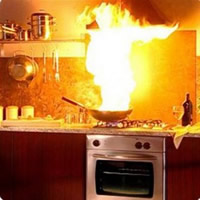Summer Safety Tips
Summer is here (finally) and that means spending more time outside enjoying pool parties, outdoor barbecues, fireworks and all kinds of fun activities — it shouldn’t mean treating burns, bandaging cuts, icing bruises, or trips to the emergency room.

Follow our summer safety tips below to help you and your family have a fun and safe summer:
1. Don’t let the heat spoil your fun in the sun.
Drink lots of water and don’t work or play too hard in the hot weather. Take some breaks in the shade or inside your home.
2. Protect yourself from the sun’s harmful UV rays.
Limit exposure to the sun between 10 a.m. and 4 p.m. when UV rays are most powerful. Wear sunglasses that block 100% of UV rays. Wraparound frames work best because they protect your eyes and the sensitive area around them. Wear hats with wide brims and slather on the sunscreen — SPF 15 or higher.








